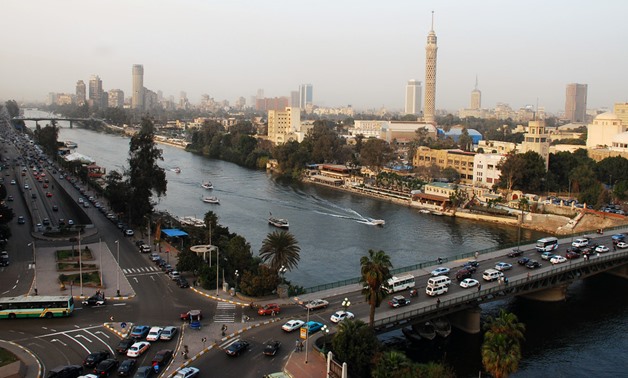
Cars crisscross through the inner city of Cairo Egypt, alongside the Nile River during the day- CC via Wikimedia
CAIRO - 19 July 2020: A number of water stations stopped operating in the Sudanese capital, Khartoum, due to a sudden decline in water level inflow from the White and Blue and Nile rivers, head of Khartoum Water Authority Anwar al-Sadat Mohamed al-Hajj was reported by Alhadath Alsudani on Sunday.
About ten stations stopped operating, he noted, adding that the gates of Roseires Dam were opened to pump water into the station in order to resume operation.
مياه الخرطوم : إنحسار مفاجئ للنيلين ونهر النيل يتسبب في خروج عدد من محطات المياه عن الخدمة أعلنت هيئة مياه ولاية...
Posted by Alhadath.Alsudani الحدث السوداني on Saturday, July 18, 2020
The sudden decline of water flow in Sudan comes amid the current dispute between Egypt, Sudan and Ethiopia over the Grand Ethiopian Renaissance Dam (GERD). The three countries are at loggerhead over some technical and legal differences regarding the operation dam and filling its reservoir. Both Egypt and Sudan reject any unilateral actions by Ethiopia regarding filling the dam without reaching a final agreement on the points of contentions.
Recently, media reports by the Ethiopian Broadcasting Corporation (EBC), the state-owned TV, reported that Minister of Water, Irrigation and Energy Seleshi Bekele announced the start of filling the dam with 4.9 billion cubic meters of water within the first stage of the filling process. However, the EBC apologized for “misinterpreting” this news.
Few hours after the Ethiopian media reports were circulated, Egypt has requested an “urgent official clarification” from the Ethiopian government, saying “Egypt continues to follow up on the developments circulated by the media around this issue,” according to Egyptian Foreign Ministry Spokesman Ahmed Hafez.
Meanwhile, the Sudanese Ministry of Irrigation and Water Resources affirmed that the Blue River water level at the border with Ethiopia has been declining by 90 million cubic meters daily.
However, two days later, the Ethiopian Ministry of Water Resources and Irrigation denied media reports on filling the Dam before reaching a bidding agreement with the downstream countries (Egypt and Sudan), announced the Sudanese Ministry of Foreign Affairs on Thursday.
Since 2014, Egypt, Ethiopia, and Sudan have entered into negotiations on the building of the dam to avoid any possible threats on the Nile downstream countries. The latest round of talks, which convened early June, reached a stalemate, ahead of the Ethiopian unilateral act of deciding to fill the dam’s reservoir mid-July without reaching a final agreement with Egypt and Sudan.
Egypt previously decided to request the United Nations Security Council’s intervention in the dispute on Ethiopia’s massive dam, after Egypt had said several times that the two countries have reached a deadlock.
The conflict between Egypt, Sudan, and Ethiopia dates back to May 2011 when Ethiopia started building the dam; Egypt voiced concern over its water share [55.5 billion cubic meters]. Three years later, a series of tripartite talks between the two countries along with Sudan began to reach an agreement while Ethiopia continued the dam construction.
In 2015, the three countries signed the Declaration of Principles, per which the downstream countries should not be negatively affected by the construction of the dam.
In October 2019, Egypt blamed Addis Ababa for hindering a final agreement over a technical problem, calling for activating Article No. 10 of the Declaration of Principles, which stipulates that if the three countries could not find a solution to these disputes, they have to ask for mediation.
Comments
Leave a Comment